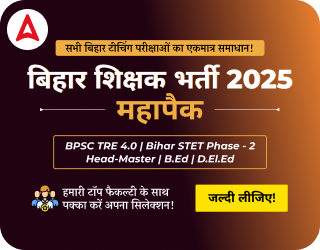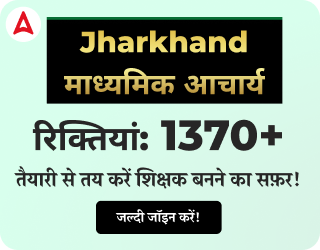Table of Contents
KVS Normalization 2023: The KVS Normalization 2023 has been implemented in the KVS Exam 2023. The KVS PRT Result 2023 has been released on 19 October 2023. KVS has released an official notification to confirm the implementation of the KVS Normalization 2023. As per the latest notification, the KVS Normalization Score for the post of PRT is available on the Application Log-in of the candidates.
As the KVS Exam 2023 has been conducted in different shifts on different days. Hence, the KVS Normalization 2023 has been implemented on the KVS Result 2023, particularly for those KVS JSA, KVS Librarian and KVS PRT Exam. For more information on KVS Normalization 2023, candidates must go through the following article thoroughly.
KVS Normalization Score Released
The KVS Normalization Score has been released for the post of PRT. Many candidates raised the grievance that they are unable to access their KVS Normalization Score. KVS has confirmed through a notification that the KVS Normalization Score for the post of JSA and Librarian is available on the Application Log-in. Hence, the candidates must login to their accounts through the login credentials to access the KVS Normalization Score.
KVS Normalization Score Released, Check Login
KVS Normalization 2023
KVS has implemented the KVS Normalization 2023 process to extract KVS Result 2023 for the exams (post) which were conducted in multiple shifts. Therefore, the KVS Normalization 2023 has ben applied to the KVS JSA, KVS Librarian, and KVS PRT Exam as these exams were conducted in multiple shifts on different days. The KVS Normalization Process 20223 is implemented to fetch fair and accurate KVS Result 2023 for the KVS Exam 2023 which was conducted on multiple days.
KVS Normalization 2023 Notification
What is KVS Normalization 2023?
KVS Normalization Process includes a process where the values that are measured on different scales are adjusted or manipulated to derive rational or standardized results. In the case of KVS Normalization, it is used because KVS Exam 2023 has been conducted on various days in two shifts. The purpose of KVS Normalization is to derive rationalized results for all candidates who have appeared in these different shifts on various days.
KVS Normalization 2023 Process
The following KVS Normalization 2023 has been approved by KVS for the KVS LDC Exam 2018. Therefore, it can be expected that KVS will implement the same KVS Normalization Process 2023 for the KVS Exam 2023 for the PRT posts as well.
Inputs required to fetch the score for the KVS normalization process
- Raw score report of the candidates who appeared for a particular post, across all shifts.
- The actual number of valid questions to be considered, post the objection
Score Normalization logic
The following has to be calculated across all shifts for all the candidates who have appeared for the KVS exam 2023 for the same post.
Total Number of Questions (A)
It is defined as the number of questions available in the question paper. (e.g. 120 questions)
As an example, let’s assume the question paper has 120 questions
Total Number of Correct Questions (B)
It is defined as the number of valid questions which have to be considered for score evaluation and score normalization, post the finalization of questions after the candidates have raised objections (if any)
B = A – # questions which are removed post-candidate objections
ASSUME there are 3 invalid questions in (A)
Then B = 120-3 = 117
Example: ASSUME a candidate has attempted 103 out of 117 questions, of which 98 are correct responses and 5 are wrong responses. 14 un-attempted questions will be Blanks.
KVS Exam Analysis 2023 For TGT PGT PRT & Principal Posts
Total Correct Responses (C)
Defined as the number of responses which are answered correctly by the candidate for the total number of valid questions (B)
In the example C = 98
Candidate Score (D)
Total Correct responses (D)
In the example D = 98
Candidate Score to be considered for Normalization (E)
Consider the case where scores will be based on 120. So, the score (D) of every candidate is to be prorated i.e. it has to be multiplied by the factor: 120/B
In the example E = (D/B)*100 = (98/117)*120 = 120 = 100.5128205
Now we need to calculate the Average and Standard Deviation for each Shift
Calculation of Standard Deviation Example: 9 candidates attended a shift
Xav is the average which are total marks divided by no. of candidates
| D or X (raw score for 120) | X = (X-Xav) | x² | |
| 1 | 31 | -34 | 1156 |
| 2 | 46 | -19 | 361 |
| 3 | 40 | -25 | 625 |
| 4 | 71 | 6 | 36 |
| 5 | 65 | 0 | 0 |
| 6 | 90 | 25 | 625 |
| 7 | 59 | -6 | 36 |
| 8 | 84 | 19 | 361 |
| 9 | 99 | 34 | 1156 |
| N = 9 | Total = L = ∑X = 585 | ∑ x² = 4356 |
Xav =: L /No. of candidates present for that particular shift = 585 / 9 = 65
Standard Deviation = square root of ∑x²/N = square root of 4356/9 = square root of 484 = 22
Total Raw Scores for all candidates in a shift (L)
The sum of Raw candidate’s raw scores (X) for all candidates in a shift
L = ∑X
In the SD example L = 585
Simple Average (Xav)
Total Raw score for all candidates in a shift (L) / Total candidate (Present) count for a shift
= L /N
Standard Deviation (S)
Calculated at a shift level based on the candidate’s scores
To be calculated as explained in the example
Normalized Score for each candidate (Xn)
Xn = (S2/S1) * (X-Xav) + Yav
| Value | Explanation |
| S2 | Is the SD of the shift with the Highest Average
Score taken as base for normalization |
| S1 | Standard Deviation for the corresponding shift (to
be scaled to S2) |
| x | The raw score of a candidate |
| Xav | Simple average of the Shift |
| Yav | Average corresponding to shift with highest Average
(taken as the base for normalization) |
Why KVS Normalization 2023 is expected?
As the KVS PRT Exam 2023 was conducted online in different shifts and on different days, therefore, the KVS will introduce KVS Normalisation 2023 to fetch fair KVS Results 2023 for the candidates who appear for the KVS Exam 2023.
With the KVS normalization process 2023, it becomes easier to evaluate the performance of the candidates appearing for the KVS exam 2023 on a similar basis on a balanced parameter. The difficulty level of each shift of the KVS exam 2023 is considered and then a formula is applied to calculate the KVS Results 2023 for the same. The normalization is already adopted by other government exams like SSC for the same purpose.




 UP ECCE Educator Salary 2025, Check Basi...
UP ECCE Educator Salary 2025, Check Basi...
 OTET Admit Card 2025 Out, Download Hall ...
OTET Admit Card 2025 Out, Download Hall ...
 HP TET Question Paper 2025, Download Art...
HP TET Question Paper 2025, Download Art...




